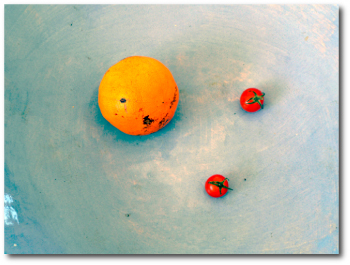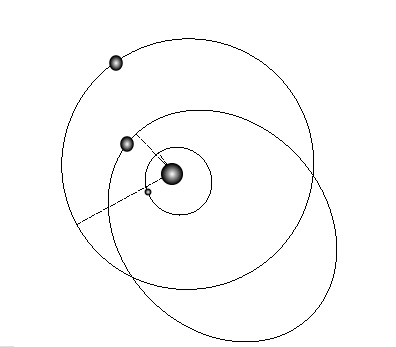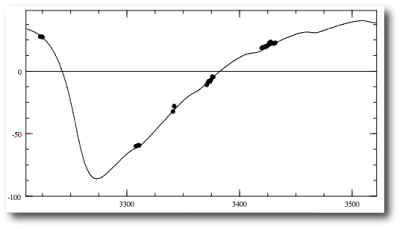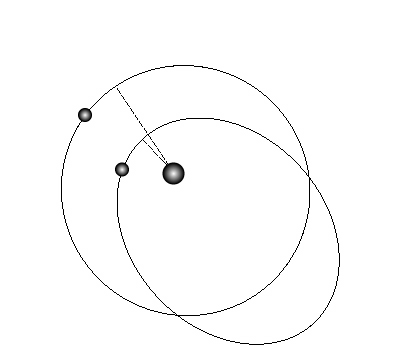
Image Source.
First, a thank-you to everyone who submitted a fit to the second systemic challenge. I just loaded all the fits into the console and evaluated the chi-squares (with integration turned on). Jose Fernandes, of Lisbon, Portugal, submitted the winner, and will be receiving the $149.99 sky atlas from Sky and Telescope.
Jose’s fit has a reduced chi-square statistic of 3.94, and is comprised of three planets:

The outer two bodies have masses 1.58 and 0.5 times that of Jupiter, with eccentricities of 0.58 and 0.14. They share a common period of 362 days. The fit also has a tiny inner planet with a mass just under 3% that of Jupiter and a period of 50 days. This little guy improves the fit by wriggling the radial velocity curve up and down to statistically grab more points.

The system that actually generated the data was quite similar:

There are two equal-mass planets with masses 1.04 times that of Jupiter, with eccentricities of 0.7 and 0.2. They share a common period of 365 days. The 50-day planet in the winning fit was spurious, as is often the case when a model planet has a mass that is far smaller than its companions.
This system is an example of a one-to-one eccentric resonance. It is based on a system that was discovered by UCSC physics student Albert Briseno in one of the simulations that he ran for his undergraduate thesis, and it was formed as the result of an instability in a system that originally contained more planets. The system experienced a severe dynamical interaction, which led to a series of ejections. After the last ejection, two planets remained. They share a common orbital period, and gradually trade their eccentricity back and forth. Their interaction gives a strong non-Keplerian component to the resulting radial velocity curve for the star, which makes this a tricky system to fit. While the system might seem absurdly exotic, it’s recently been suggested by Gozdziewski and Konacki that HD 82943 and HD 128311 might have their planets in this configuration (you can of course try investigating this hypothesis for yourself with the console). Their paper is here.
The challenge 002 system is an example of a general class of co-orbital configurations in which the two bodies constitute a retrograde double planet. If you stand on the surface of either world, the other planet appears to be making a slow retrograde orbit around your moving vantage as the libration cycle unfolds over several hundred orbits.
In tomorrow’s post, we’ll stay on the topic of co-orbital planets, and look at some interesting new work by Eric Ford on the possibility that we might soon be able to observe planets in Trojan configurations. Two planets in a Trojan orbit librate around the points of an equilateral triangle in the rotating frame. Indeed, when such an arrangement occurs, it’s possible that a particularly interesting dataset might have the capacity to launch a thousand fits.
[For more about 1:1 resonances, see this post and this post. For a discussion about the audio wave forms that they produce, see this post.]

Eugenio writes with more details about how the synthetic challenge 002 data set was produced:
Not the subject but I know that Greg(and others) will appreciate this discovery => “A Long-Period Jupiter-Mass Planet Orbiting the Nearby M Dwarf GJ849”
http://fr.arxiv.org/abs/astro-ph/0610179
:-D
Hi Vincent,
Thanks for the link — that is a very interesting discovery, although it looks like the primary, at ~0.45 solar masses is on the hefty end of the M-dwarf range.
In their abstract, they note that Jupiter-mass companions within 2.5 AU are roughly three times more common around FGK-dwarfs than around M-dwarfs. That conclusion fits in well with the core-accretion scenario for giant planet formation, which holds that giant planets should be much less frequently found around M-dwarfs.
We’ll get those v’s up on the console ASAP. The internal errors are very small on the measurments, that’s a very nice data set.
best,
Greg